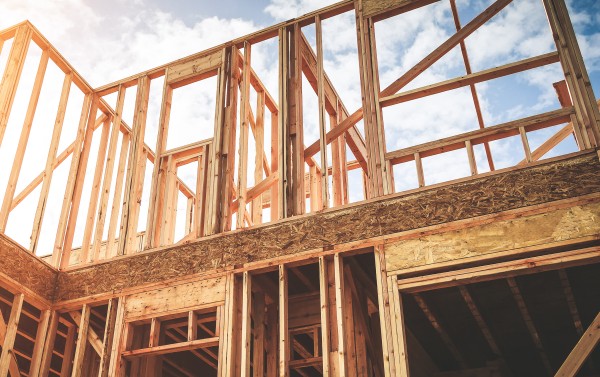Eco builds: five ways to increase the sustainability of your self-build
Building your own home offers you the freedom to make your mark: to create a comfortable eco self-build which is energy efficient and sustainable.
We’re living in an age with an increased focus on climate change with the UK government committed to cutting greenhouse gas emissions in the UK to almost zero by 2050. It’s no wonder that self-builders are choosing to increase the sustainability of their self-builds in a drive to cut carbon emissions. A sustainable eco home can help reduce energy bills and reduces its overall environmental impact.
1. Take the ‘Multi Comfort’ approach
Considering the best materials to create an airtight and insulated home can transform the performance of the building. A ‘fabric-first’ approach from the outset means you can achieve a sustainable home with plenty of natural light, minimal noise from outside and inside, with the best air quality and temperature. This is everything Saint-Gobain’s Multi Comfort stands for.
Self-builder John Pryer embarked on a journey to create the very first Multi Comfort home in the UK to elevate his family’s acoustic and thermal comfort. His hard work paid off – resulting in a sustainable family home.
For example, John used British Gypsum’s ThistlePro PureFinish plaster with Activair technology to help remove VOCs (volatile organic compounds) and improve the air quality in his home.
John combined Multi Comfort with Passivhaus, which is all about using the best insulation technology, creating efficient windows and doors and using effective heating systems. This has resulted in a comfortable, low energy building with very low heating costs and emissions.

He advises: “Living in a Passivhaus and Multi Comfort house I would recommend it to anyone. The significant savings in energy make this a worthwhile investment. But do understand what you are taking on before you jump into it. You need to have experts working with you who really understand the process and make sure you understand what they are doing and that they are all working together.”
2. Choose green building materials
Think about the insulating materials you could use on your self-build project. Saint-Gobain Isover, for example, manufactures and supplies glass mineral wool (GMW) insulation – a material manufactured of up to 80 per cent recycled glass. Products manufactured by Saint-Gobain Isover have achieved a BES 6001 ‘Good’ Rating for responsible sourcing and the manufacturing processes involved.

Selecting eco-friendly materials like sheep’s wool, wood fibre and recycled newspaper means they can be reused, recycled and are fully biodegradable.
3. Create a reasonably-sized house
All good things come in small packages, so the saying goes. A smaller house is more efficient in terms of running costs and energy bills – something self-builder Gareth Boyd took into account when constructing his home. He said: “We based our design on a simple barn shape to minimise build cost and we got everything we needed fitted into 1,700 square feet - to keep costs to a minimum.”

4. Opt for a sustainable structural build system
Selecting a sustainable system like a timber frame is very popular with self-builders. As buildings need to meet new energy efficiency standards, timber is often the material of choice.
Offsite manufactured structural timber systems have grown in popularity as they can be built faster and can have excellent thermal efficiency through using insulation as part of the pre-manufactured panel, which can reduce the running costs of a building. Structural timber can deliver a number of advantages, in both the long and short term – it’s sustainable, economic, thermally efficient and can be constructed quickly. Explore our blog on building methods for your self-build here.
Read our guide to timber frame houses here.

5. Consider renewable energy sources
Once you’ve decided on the most efficient building fabric, explore renewable energy sources such as solar technology and heat pumps.
Installing wood-fuelled heating systems, otherwise known as biomass heating, means you use organic material such as wood pellets, logs or chips to generate heat. They are environmentally friendly and carbon-neutral when burning. This can generate significant savings.
Read our blog on renewable energy sources for your self-build here.


Is a timber-frame whole-house kit right for your self-build?
Read our guide on timber frame homes.

Building an efficient self-build home with low running costs
Learn more about designing an energy-efficient home.